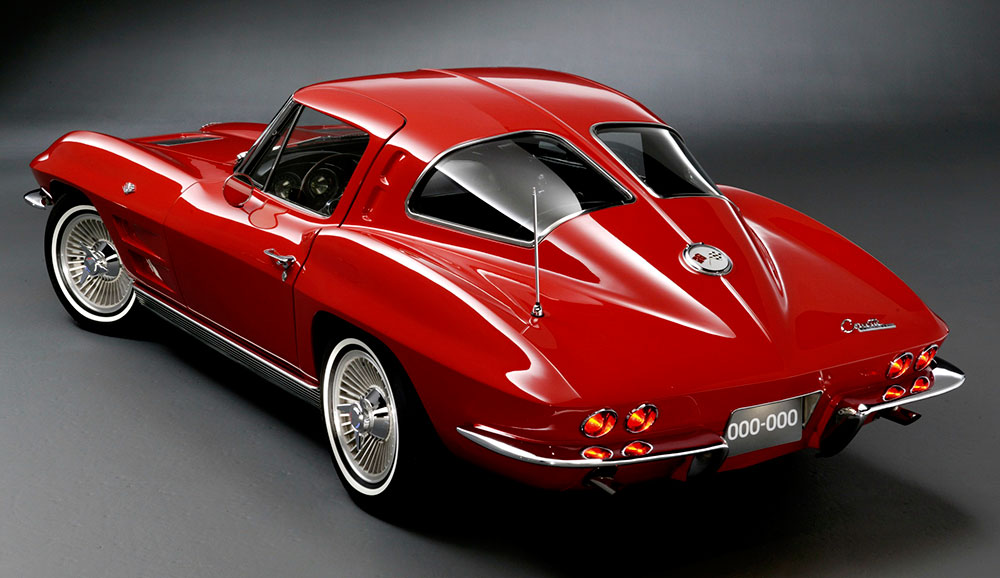By the early 1960s, the Corvette had triumphed over the Thunderbird and was now firmly America’s sports car for the second-gen’s arrival as a 1963 model.
Car guys, pilots and engineers all over America had taken the lightweight-big engine formula to heart with their prized first-gen Corvettes, but now they wanted more performance by every measurement. Much more speed, in particular.

Chevrolet had similar ideas when brainstorming ways to replace the C1 as far back as 1957. The Q-Corvette concept was a working idea of a smaller, lighter and nimbler Corvette than ever before. Four-wheel discs were to be standard, and the car was could hold its own on a racetrack right off the showroom floor. Over the C2’s relatively short time — until 1967 — this Corvette became the quickest factory machine ever in the quarter-mile with the 11.02 second time recorded by the 1967 Corvette L88 Sting Ray Convertible.


The dream factory inside Harley Earl’s General Motors was flying high during this time period. The refresh of the `Vette for 1958 was a huge hit, and the company could barely meet demand for it. Harley Earl’s designs were continually updated to fit Zora Arkus-Duntov’s latest suspension layout or engine position. So the Q-Corvette became the Grand Sport concept, which led to the 1963 styling.

A few years down the drain while spinning their wheels with mid-engine designs was ultimately beneficial for futuristic looks the Corvette C2 of 1963 – if not the placement of its engine. The Split Window look and speedboat fender peaks were instant classics for this series of Corvettes that came standard as a real fastback coupe versus just a cabrio.

Share this:
- Click to share on Facebook (Opens in new window)
- Click to share on Twitter (Opens in new window)
- Click to print (Opens in new window)
- Click to share on LinkedIn (Opens in new window)
- Click to share on Reddit (Opens in new window)
- Click to share on Tumblr (Opens in new window)
- Click to share on Pinterest (Opens in new window)
- Click to share on Pocket (Opens in new window)
- Click to share on Telegram (Opens in new window)
- Click to share on WhatsApp (Opens in new window)





Pingback: 2020 Chevrolet Corvette Stingray | Welcome to the 007 World!
Pingback: 1964 Pontiac XP-833 Banshee | Welcome to the 007 World!